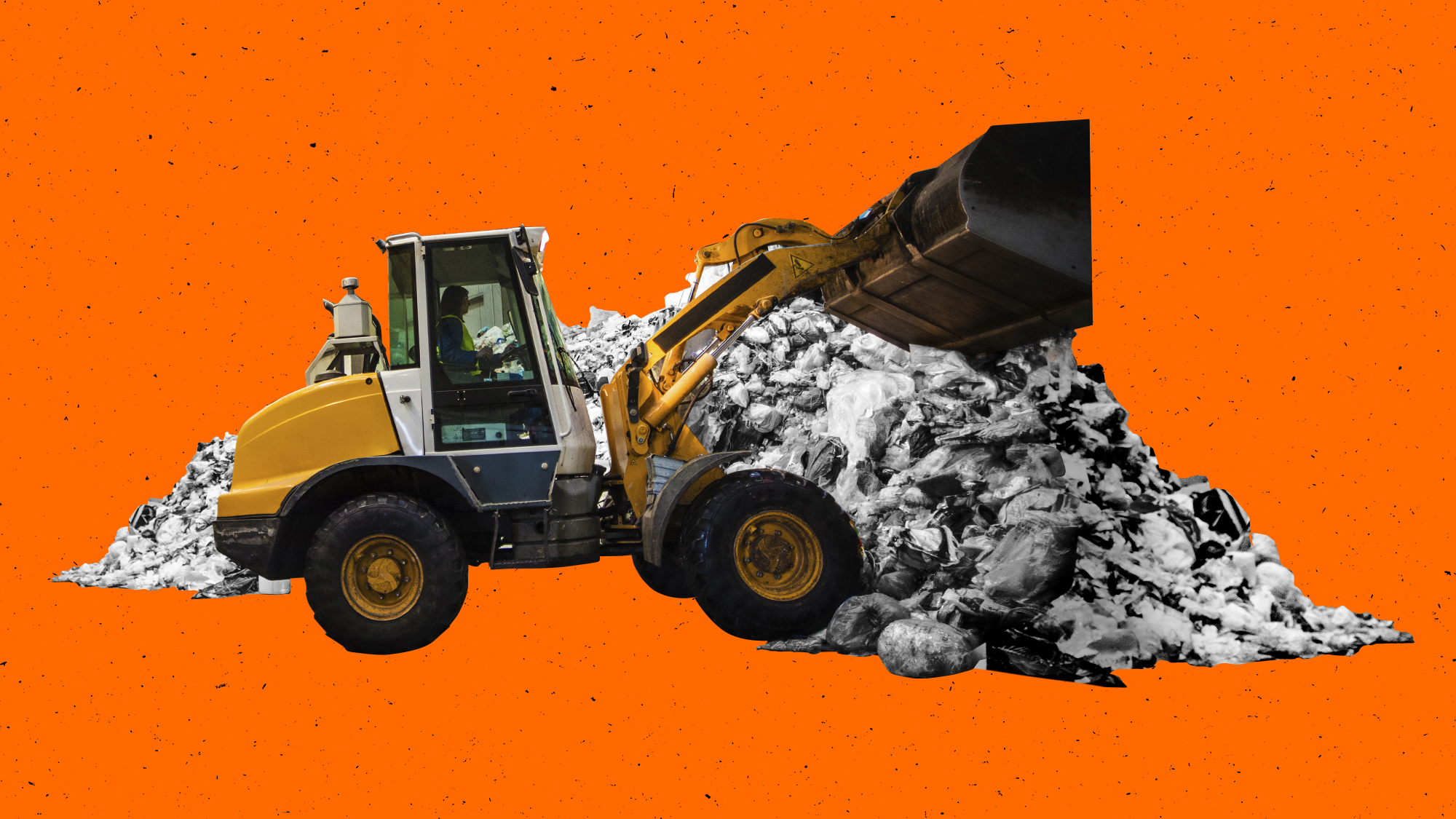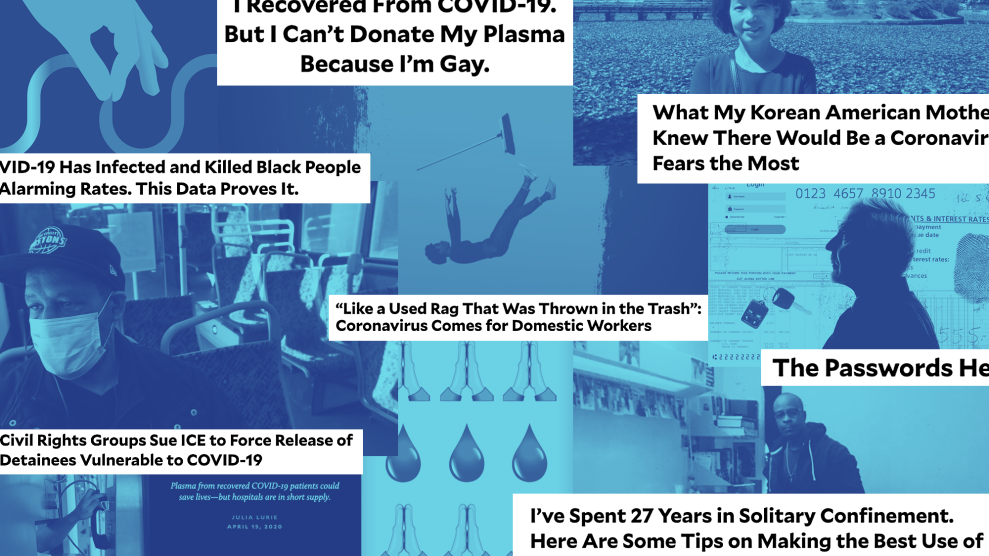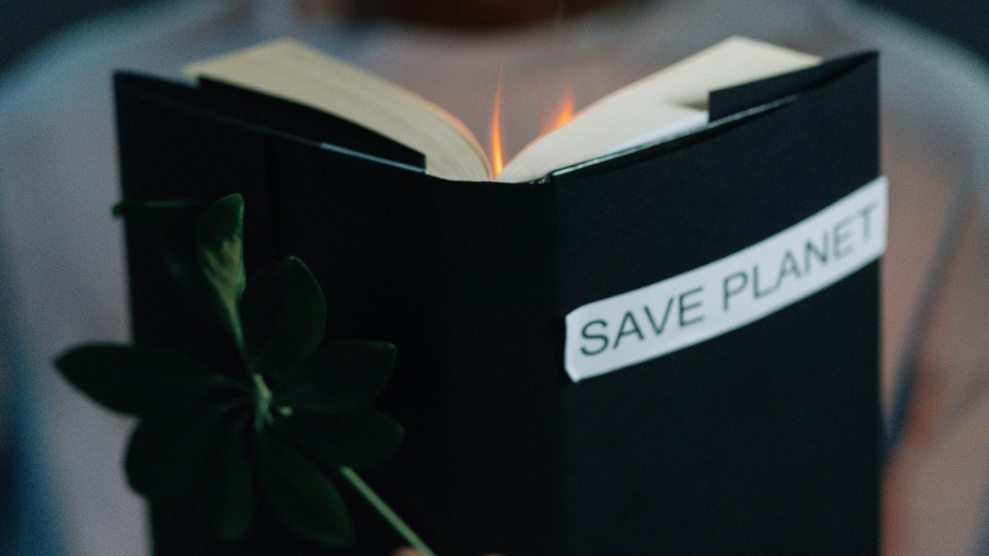Weird things have become normal in the time of coronavirus. We bounce between utter panic, gallows humor, and some kind of bizarre normal in which the pandemic is political. At my house we spent spring break building a quarantine shack to protect an at-risk family member. An uncle died of COVID-19 and the funeral will likely happen on video. My son’s best friend, who works at Starbucks to help his parents, a truck driver and a nurse, texted—as if his family didn’t have greater worries—to ask if we needed toilet paper.
One thing that hasn’t become normal: The extraordinary self-centeredness of our leaders, and I don’t just mean the man in the White House, who should have given us comfort and instead offered bleach. Ordinary people are sacrificing for the greater good, but too many of those at the top of our politics and our economic ladder are treating the disaster more as an opportunity—for point-scoring, for propaganda, for self-enrichment. Meatpacking companies that force workers to labor dangerously close together, with poor protection and for little pay; the mayor of Las Vegas offering her city’s residents as a “control group” so casinos can open up; Elon Musk, who not long ago insisted that the pandemic would be over by now, flouting the Bay Area’s shelter-in-place order to reopen his Tesla factory and force my neighbors back to work. (“If someone is arrested, I ask that it be only me,” he tweeted melodramatically, to which a worker retorted: “And what if people get sick? Is that going to be him?”)
But the moment I want to dwell on for a minute is a different bit of routine venality, one from my own field, the media. Early in the crisis, a colleague at a major newspaper received instructions from her corporate bosses to slash jobs, cut pay, and stop rent payments, even as the company was hitting all its financial targets.
That last part is what makes it infuriating. The crisis has been devastating to media as advertising has collapsed, but this company, MediaNews Group, didn’t make the cuts because they had to keep the wheels on. They did so because they are owned by a hedge fund that squeezes its holdings for profit, in good times and bad, before discarding the empty husk.
That’s a story of far too much of the American economy, and I wanted to unpack it with you because amid the storm of terrifying headlines, too few people are talking about the conditions that got us to this place—including the broken economic models underlying vital public services, from health care to news.
It’s also a story that is specifically relevant to us here at Mother Jones. As a nonprofit accountable not to hedge fund investors, but to our readers, we have weathered 44 years of economic ups and downs. But how we get through this one is a big question: We’re trying to raise $400,000 from our online readers by June 30 so we can keep doing all of the reporting this crazy year demands. But more on that later—first, let’s look at the big picture.
“News is just like waste management.”
Mother Jones is a nonprofit because, all the way back at our founding in 1976, it was clear that the advertisers underwriting a lot of magazines—car manufacturers and cigarette makers, mostly—would not want to appear next to exposés of exploding cars or the tobacco industry’s lies. Our founders knew support from readers was the only way to fund the unrelenting investigative reporting they set out to do.
I was in grade school then, but by the time I got my start in journalism in the ’90s, Mother Jones was an inspiration for local muckrakers like my colleagues at City Pages, an alternative weekly in Minneapolis/St. Paul. (One of the first stories I edited was an investigation by Clara Jeffery, who is now our editor-in-chief, about sexual assault on campus). There were dozens of newspapers in most major metro areas then, small and large, each of them with some ambition for holding the powers that be accountable. But already, there was trouble on the wind.
Ken Doctor was an editor at one of the two big dailies in town, the Pioneer Press. It was a strong local paper, capable of big-league reporting such as a series in the late 1980s, AIDS in the Heartland, that challenged Midwesterners’ denial of the epidemic. Doctor understood sooner than most how the internet would transform the news business, and he pushed Knight-Ridder, the chain that then owned the Pioneer Press, to innovate. It didn’t do so fast enough, and he left when Knight Ridder was sold to another chain, McClatchy, in 2006.
Some years later, an experienced financial analyst told Doctor: “You guys think you’re special in the newspaper business…But it’s a distressed industry, and distressed industries get consolidated. In that way, news is just like waste management.”
Today McClatchy is in bankruptcy, valued around $300 million—just 7 percent of the $4.5 billion it went for in 2006. It’s controlled by the same hedge fund, Chatham Asset Management, that controls the National Enquirer (and reportedly played a bit part in Michael Cohen’s fixer work for Donald Trump). Some of the most prominent of those former Knight-Ridder papers have been sold to another chain, Digital First Media, now known as MediaNews Group, that is owned by a different hedge fund, Alden Global Capital. (Following along? It’s not easy to track who’s paying for the news you get, and that’s no accident—vultures don’t operate out in the open.)
Alden’s role in destroying newspapers made news in 2018 when one of its papers, the Denver Post, bravely published an editorial on how the company was eviscerating its newsroom—it had gone from more than 200 journalists to 25. There was talk of how local investors might try to buy the paper and restore its civic mission. Don’t bet on it, Doctor told me back then. “Alden is just going to run it into the ground. That’s outrageous and it’s un-American in my view, but they are likely to get away with it, because that sense of outrage will likely diminish very quickly.”
Reader: It did, and the same is true in every other field where hedge funds have become dominant. Sears, Toys “R” Us, Payless Shoes, there’s an endless list of familiar names—companies that needed help confronting economic challenges but were gutted and left for dead by financial firms designed to deliver short-term profits for ultrawealthy investors. As the leader of the journalists’ union NewsGuild once noted, “with private equity, it’s about squeezing out the 20 percent [profit], and anything goes. Use it up, sell it, or kill it. The profit is the product.”
Back to newspapers: Under Alden/MediaNews, Doctor’s Pioneer Press was cut from 225 journalists to two dozen, and while those few survivors do the best they can, that makes life a lot easier for those in St. Paul with something to hide. In fact, as American Prospect co-founder Robert Kuttner noted a couple of years ago in a story he co-wrote with the pseudonymous editor of a local newspaper, “Corporate predators are managing to destroy a once-robust tradition of independent journalism without having to tell editors and reporters what to write or not write. Starvation, it turns out, is at least as effective a way to keep nosy reporters at bay as killing their stories before they see the light.”
Recently, Doctor has been writing about the “final dance” of consolidation that is drawing most newspapers closer to the last waltz with hedge funds. June 30 is the deadline for a number of these investors to make moves that could mean lights out for many more newspapers.
That’s terrifying not just for journalists. “We’ve seen how this can play out,” Doctor told me. “You look at companies like Sinclair”—the television chain that made local anchors read right-wing corporate scripts, “and this is headed down a very bad road in terms of what it means for people’s understanding of the world.”
And it’s all happening at a moment when combating disinformation and holding the powerful accountable is more vital than ever.
Which makes it so troubling that the coronavirus crisis has set off what’s been called a “media extinction event”: Just in the first six weeks of the crisis, at least 36,000 workers at news companies were laid off, furloughed, or faced with pay cuts. Digital news organizations like BuzzFeed News, Vox, Vice, and Bustle are struggling, and dozens of newspapers have cut back or ceased publication altogether. The list of casualties reads like an American dirge: The Portland Mercury. The San Antonio Current. The Isthmus in Madison, Wisconsin. The Times-Leader in Wilkes-Barre, Pennsylvania. The Durango Herald, Barre-Montpelier Times Argus, Paducah Sun, and San Francisco Examiner. The immune system of democracy is crashing before our eyes.
Staring at the budget
I would be lying if I didn’t admit that I’m biting my nails about what the crisis means for Mother Jones. Advertising budgets are uncertain, and so are those of foundations. We can’t sell our magazine on newsstands now, nor can we put on real-world events. All of these sources put together account for about 40 percent of our income. The rest comes from individual support—from 230,000 people, give or take, who subscribe or donate to Mother Jones because they believe in independent, investigative reporting.
Every time I write that number, I get a catch in my throat: It’s such an honor and privilege to have your support. But there’s a lot of risk there too as some of those 230,000 people won’t be able to stick by us in the coming year.
I’ve been spending a lot of time with our finance team, led by our brilliant and committed CFO, Mitch Grummon, trying to bring things into square. We’ve made all of the cuts we can without impacting our journalism (we can’t cut perks and luxuries because we’ve never had them), and we’ve received a loan from the federal government’s stimulus program that gave us a little breathing room. But it will still be hard to do all of the reporting you want us to do from now until the election.
And “the reporting you want us to do” is not an empty phrase. When we asked what our priorities should be in the time of coronavirus, your answer came through loud and clear: Push hard on exposing corruption and profiteering, investigate threats to voting rights and election security, counteract disinformation and propaganda—and show how all of these work together. You want us to connect the dots, not dispassionately regurgitate the day’s news or amplify official misinformation. That’s a big part of where journalism failed in covering the 2016 election, and where it too often fails now. (Remember the New York Times‘ genteel suggestion that drinking bleach is problematic “in the view of some experts.”)
Fourteen years ago, at another time when official deception had lethal consequences, Mother Jones set out to do what other media wouldn’t: We called a lie a lie. That’s what our job is now, too. And so we’ve started a big project on the Trump administration’s coronavirus deception and how it will affect all of our lives. “Trump’s 100 Days of Deadly Coronavirus Denial” is just the first installment, but it’s already staggering. A more comprehensive version will be published in our print magazine, and we’ll keep expanding the project to create an irrefutable repository of one of our nation’s gravest failures of leadership.
That’s just one of the many ways in which our newsroom is focusing on the big picture of this crisis. The critical issues our reporters specialize in haven’t gone away—they have become more acute, even life and death. And so all of the 60 journalists in our newsroom, from senior editor to fellow, have been working from their kitchen tables, bedrooms, and closets to investigate how the crisis is affecting their beats: voting rights and voter suppression; election manipulation and propaganda; gender, racial, and economic justice; inequality and workers’ rights; and, of course, corruption of every stripe. Fearless journalism, not cash for investors, is our product.
Here’s just a slice of what that looks like: Ari Berman is chronicling efforts to further undermine access to the ballot. David Corn, our Washington bureau chief, is keeping an eye on the scandals that, with the media distracted, the administration is trying to sweep under the rug—such as how, under cover of darkness, Moscow is once again attacking our elections. Ali Breland is going after how online extremists are using the moment for recruiting (in this story, he showed how QAnon conspiracies have gone rampant in wellness circles). Noah Lanard published the bone-chilling voices of women in immigration detention who asked for soap and got pepper-sprayed instead. Sinduja Rangarajan and Eddie Rios compiled the data on how the coronavirus is devastating communities of color. There are so many stories like these, where MoJo reporters are bringing their expertise to bear on the most urgent stories of this moment. We can’t put those on hold.
And thanks to you, our readers, we don’t have faraway corporate bosses sending slash-and-burn memos. That’s why getting as close to that $400,000 goal as we can is so important.
To be sure, it feels scary to ask for an outpouring of support amid this crisis. And in the past, we’ve only been able to hit a number this big with a pitch for a special project we couldn’t otherwise do. But now it’s about keeping the core of our work going, and I know we can get it done.
Bear with me for a quick peek at the numbers: Right now, only 0.02 percent of our site visitors donate or subscribe. A lot of folks are surprised to find out how low that number is, but that’s how media works in the digital age.
Maybe you thought everyone else was pitching in, or that your support really wouldn’t make that much difference. But right now, the world is all about how each of our decisions adds up to something powerful. We can hit that big $400,000 number by June 30 if, every day, 203 readers decide to pitch in our average online donation of around $42. You and 202 of your fellow readers can make all the difference, here at Mother Jones and in our democracy at large. And if even 10 percent of those donors decide to become monthly supporters, it will put our reporting on a much more solid footing for the difficult months and years to come.
Building better
Keeping our newsroom going strong is a big lift, and cynics might say now is the wrong time to ask you to help us do it. But I don’t think the cynics know what Mother Jones readers are made of. You’re not easily discouraged, and you don’t want us to be either. In fact, you know that when old structures and habits have landed us in crisis, the time has come to build something better.
And building better is what it’s all about now. If this crisis has shown us anything, it’s that self-interest run amok literally kills. The virus has shown us the true cost of starving public health and every other form of civic infrastructure. And the people doing the starving are pretty much the same across the board: Hedge funds made nursing homes sitting ducks for the virus by squeezing every drop of profit from them, just as they did with newspapers. “The profit is the product,” again.
That is the “normal” that got us here, and we shouldn’t return to it. And I take heart in this: So much of what seemed impossible just two months ago is already happening, in each of our lives (my colleague Brian Hiatt wrote about how the Mother Jones community is stepping up to help others) and in politics too: A massive expansion of unemployment benefits. Whole countries moving toward universal basic income. Miles and miles of streets closed to car traffic. Mitt Romney demanding big pay raises for front-line workers.
It took a horrible crisis to make these things happen, but once they have been tried, it’s much harder to say they can’t work. I’m hoping that it also becomes harder to say it’s impossible for America to have journalism without advertisers, billionaires, or hedge funds in control. And yes, I’m hoping that you can help us hit our $400,000 goal by June 30.
Because that consultant who talked to Ken Doctor all those years ago was right: News is like waste management. It’s essential, it can’t happen if we don’t pay for it, and if it goes away, you’re buried in crap.









